Ronda
Alan: Earlier today, I had reason to review some of the photos I took while traveling in Andalucia, Spain in June of this year.By any measure, the Pueblos Blancos are extraordinary.
10 Top-Rated Pueblos Blancos (White Villages) of Andalusia
An enchanting world of Moorish charm awaits visitors who travel off the beaten path to the picturesque Pueblos Blancos (White Villages) of Andalusia. These small, quiet hilltop towns are distinguished by their simple whitewashed houses influenced by the Berber architecture of North Africa, the Moors' native land. The Pueblos Blancos are a wonderful addition to an Andalusian tour. However, the only way to arrive is by car. After visiting the most touristy cities ofSeville, Granada, and Córdoba, the Pueblos Blancos offer a welcome escape to nature and a more relaxing pace. Most of the villages are clustered around the Sierra de Grazalema, the Sierra Nevada, and Las Alpujarras. Some of the villages are close to each other and can be easily combined on a driving itinerary.
1 Arcos de la Frontera: Gateway to the Pueblos Blancos
The gateway to the Route of the Pueblos Blancos, this beautiful village has been declared a national historic site. Influenced by Moorish architecture, the charming whitewashed houses are arranged in a semicircle on a cliff top above the Río Guadalete. Arcos de la Frontera has several fortified mansions and two exquisite churches. On the Calle Deán Espinosa, the Basilica of Santa María de la Ascension blends a variety of architectural styles. Built in the 15th to 16th centuries, the church reveals the transition from Gothic to Renaissance and incorporates Mudéjar as well as Baroque details. The Church of San Pedro, dramatically standing above a steep limestone cliff, is decorated with noteworthy paintings. Arcos de la Frontera is also known for its traditional Easter festival and its regional cuisine. For a pampering hotel experience, stay at the luxurious Parador de Arcos de la Frontera housed in an elegant building overlooking the town and the Guadalete River.
Accommodation: Where to Stay in Arcos de la Frontera
2 Bullfighting in Ronda
Perilously clinging to a sheer cliff, Ronda stands at a dizzying height and offers thrilling views of the dramatic landscape. About 85 kilometers from Arcos de la Frontera, the town straddles the El Tajo Gorge with the emblematic Puente Nuevo (New Bridge) crossing the 98-meter deep ravine. Besides its spectacular setting, Ronda is famous for bullfighting and its Plaza de Toros is Spain's second oldest bullring. Ernest Hemingway immortalized the romance of Ronda and bullfighting in several of his novels. In the old town (La Ciudad), the quaint narrow streets and whitewashed buildings reveal a rich Moorish inheritance. The ancient Arab Baths in the Barrio de San Miguel are further proof of the Islamic influence. Another interesting historical narrative is the story of the town's bandits, illustrated at the Museo del Bandolero (Museum of Bandits). During spring and summer, Ronda comes to life with its festivals. The Fair of Pedro Romerofeatures folkloric shows, flamenco singing, and Goyaesque bullfighting. Other events include theMay Fair, a traditional agricultural festival, and the Roman Pilgrimage that reenacts a fiesta of ancient Rome.
Accommodation: Where to Stay in Ronda
- Read More:
- 11 Top-Rated Tourist Attractions in Ronda
3 Grazalema: A High Mountain Village in a Natural Park
Grazalema is a high mountain village of the Cádiz province (50 kilometers from Arcos de la Frontera), nestled in a valley and surrounded by the gorgeous landscape of the Parque Natural de Sierra de Grazalema. The area is ideal for nature walks and hiking. One of the best examples of an Andalusian Pueblo Blanco, this ancient Moorish village is a jumble of tightly packed whitewashed houses, narrow alleys, and quiet squares. The maze of pedestrian streets leads to hidden spots and stunning viewpoints of the mountains. Grazalema has a lovely 18th-century church, the Iglesia de Nuestra Señora de la Aurora, and a 17th-century parish church, theIglesia de la Encaminación. The village is also well known for its traditional crafts and has aTraditional Textile Museum.
4 Vejer de la Frontera
Standing high above the Río Barbates, the hilltop village of Vejer de la Frontera is one of the most beautiful of the Pueblos Blancos. About 70 kilometers from Arcos de la Frontera and 57 kilometers from Cádiz, the village is a designated Historic-Artistic Site. This ancient fortified town was under Arab rule for six centuries. Moorish charm is found throughout the village in its Arab-style Andalusian whitewashed houses and narrow, winding streets. Vejer de la Frontera is only a few kilometers away from the sea, and many spots in the village offer mesmerizing panoramic views of the coastline. The 11th-century Moorish castle is a top tourist attraction along with theArch of Segur and the old Jewish quarter. The village has two historic churches: the Iglesia del Divino Salvador and the Santuario de la Nuestra Señora de la Oliva, which contains a precious 16th-century shrine.
5 The Historic Monuments of Medina Sidonia
Steeped in history going back to Roman times, this characteristic Pueblo Blanco lies six kilometers south of Arcos de la Frontera. Medina Sidonia is a majestic hilltop village surrounded by a rural landscape where many bull ranches are found. The main tourist attractions of the village are its Gothic church, the Iglesia de la Santa María de la Coronada, which has an impressive Plateresque retablo; the ruins of the 13th-century Arab castle of Torrestrella; the ancient ramparts; and the Roman bridge. The village also has several other historic churches worth visiting: the 17th-century Convento de las Descalzas, which has a splendidly decorated dome, and the seventh-century Ermita de los Santos Mártires (hermitage), one of the region's oldest churches. The serene Monasterio de San José del Cuervo stands outside of the village in a remote and peaceful environment.
6 Fiesta of Corpus Christi in Zahara de la Sierra
The stunning little village of Zahara de la Sierra is set into a steep hillside in the province of Cádiz, 55 kilometers from Arcos de la Frontera. The town dates back to Moorish times and endured a turbulent history because of the conflicts between Islamic and Christians rulers. By the 15th century, the Christians reconquered the Zahara de la Sierra with help from Don Fernándo. The village is famous for its fiesta of Corpus Christi (around Easter), a traditional religious festival featuring elaborate decorations all over town. The festival is a lively event that has become a popular tourist attraction. Spring and summer bring blooming fields of wildflowers, making it a popular time for nature lovers to visit.
7 Prehistoric Caves near Villaluenga del Rosario
At the foot of a rocky massif, Villaluenga del Rosario is another high mountain town in the Sierra de Cádiz mountain range (about 52 kilometers away from Arcos de la Frontera and 13 kilometers from Grazalema). This typical whitewashed village has a small 16th-century church, the Iglesia de San Miguel. The village also boasts the oldest bullring in the province of Cádiz, which is constructed entirely out of stone. Near the village is the Cuevas de la Manga, prehistoric caves where remains of the Neolithic era were found. Villaluenga del Rosario is a great place for outdoor adventures such as hiking and mountain climbing.
8 The Sunny Beaches of Salobreña
The town of Salobreña is a lovely seaside Pueblo Blanco on the "Costa Tropical" (68 kilometers south of Granada) by the Mediterranean Sea. The village is a cluster of whitewashed buildings perched on a hilltop, which is dominated by an ancient Moorish castle. Visitors will enjoy the charming village ambience combined with great weather and nearby beaches. The coastline around Salobreña offers long beaches and mild waters. Because of the warm climate, tropical fruits and sugar cane flourish here. The fresh seafood is excellent, and the cuisine is delicious. Surrounded by a beautiful natural environment, Salobreña is an ideal spot for travelers who enjoy outdoor activities and watersports.
9 Benaocaz: An Ancient Moorish Village
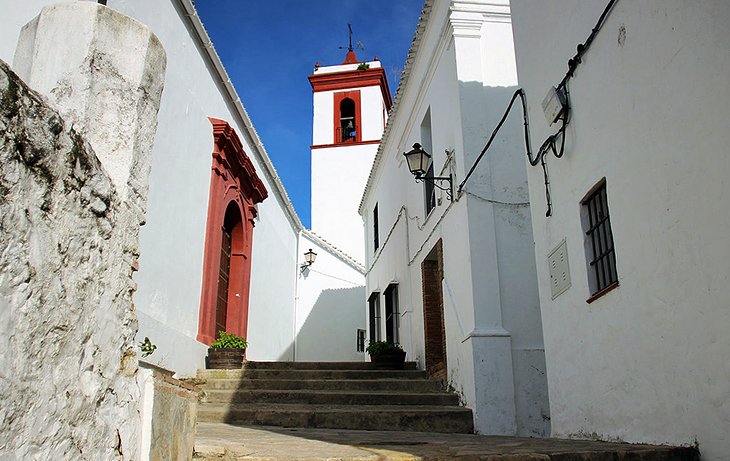
Benaocaz is an ancient Moorish village with flower-adorned whitewashed houses and beautiful mountain scenery. The historic area of the village, the Barrio Nazarí, dates back to the eighth century and has a typical Islamic flavor with its maze of narrow, winding streets and pedestrian staircases. Be sure to see the Aznalmara Castle built in the 13th and 14th centuries. Also worth visiting are the San Blas and Del Calvario Hermitages and the San Pedro Apóstol Parish Church. The village is 46 kilometers from Arcos de la Frontera in the Sierra de la Cádiz, an area with many scenic hiking paths and walking routes, including a trail along the ancient Roman Road.
10 The Cave Dwellings of Setenil de las Bodegas
About 20 kilometers from Ronda, Setenil de las Bodegas is a worthy detour. This unique Pueblo Blanco grew out of a collection of cave dwellings, and many of the present-day dwellings were hewn from rock. Entire rows of whitewashed buildings seem to be submerged under massive rocky overhangs. Setenil de las Bodegas has been settled since the Moorish Almohad period of the 12th century. A legacy of the Islamic heritage, the ruins of a Moorish castle overlook the medieval village.
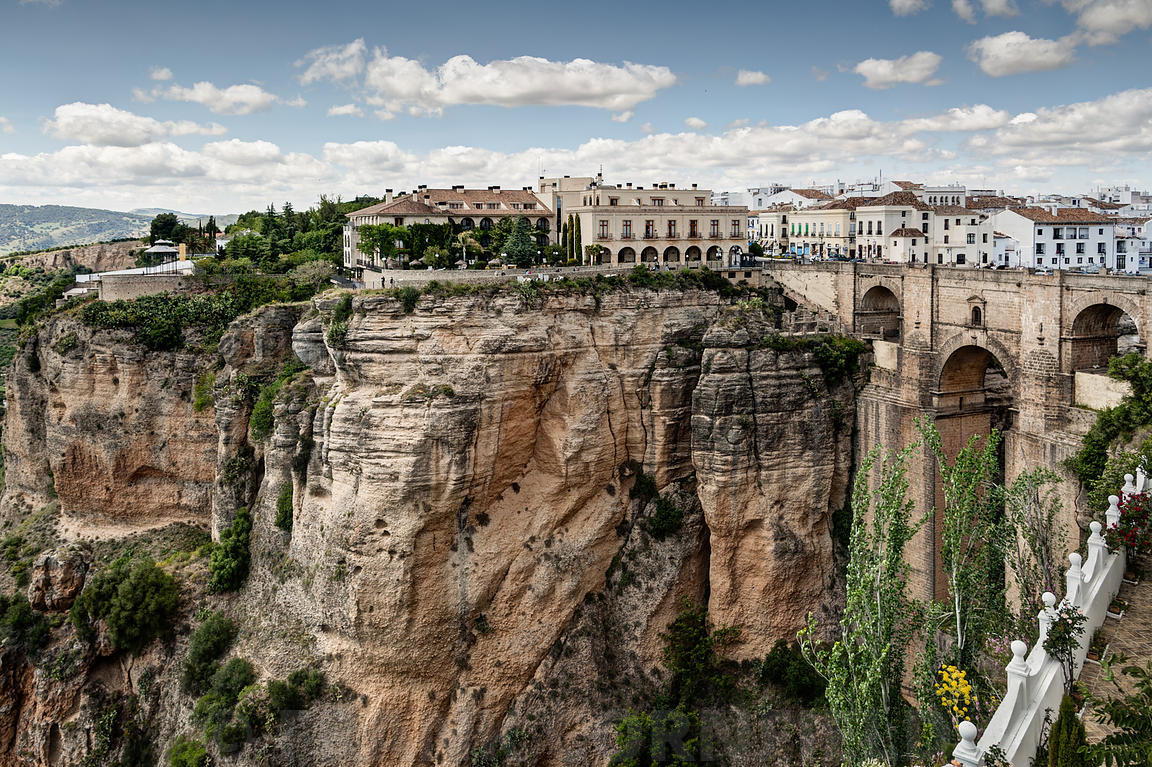
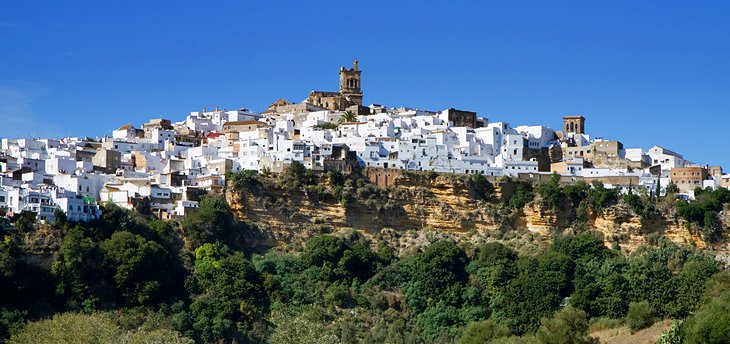
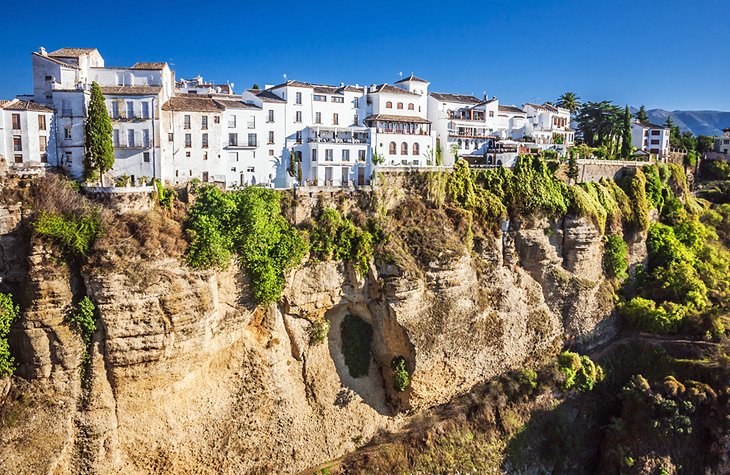
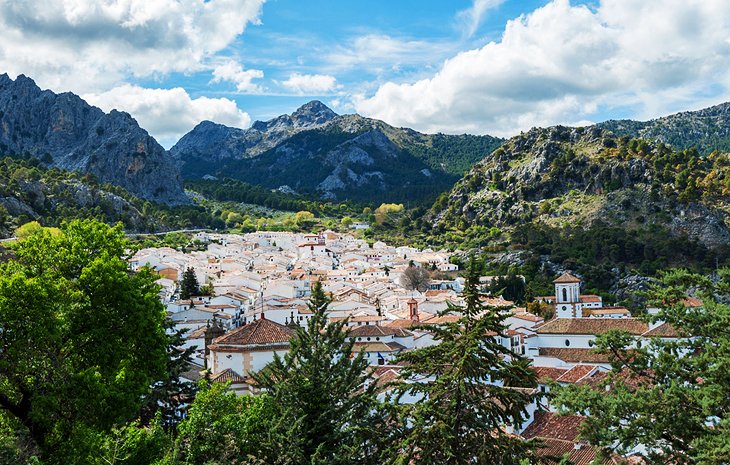
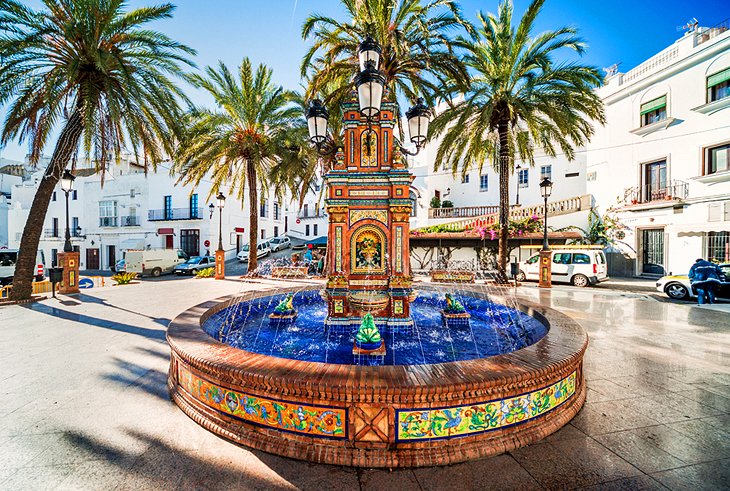
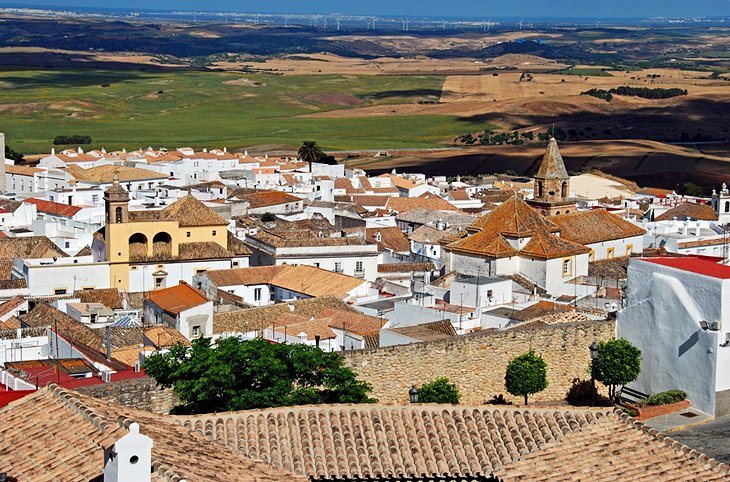
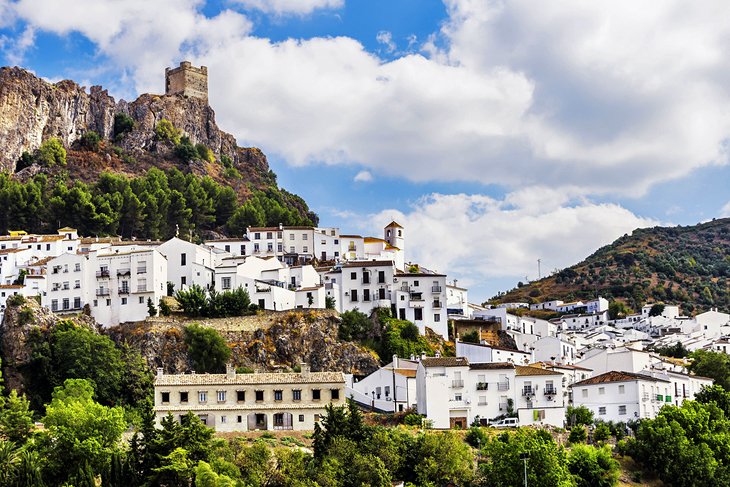
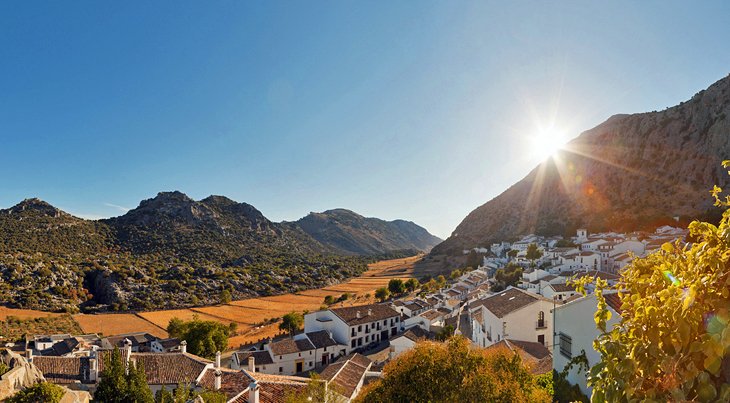
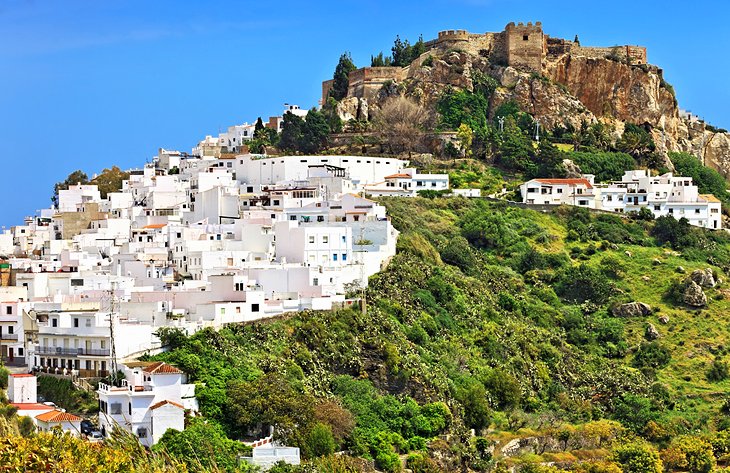
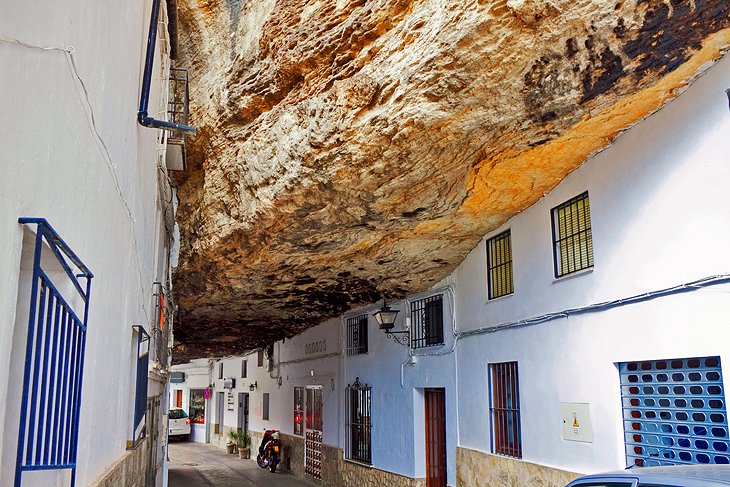
No comments:
Post a Comment